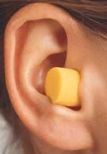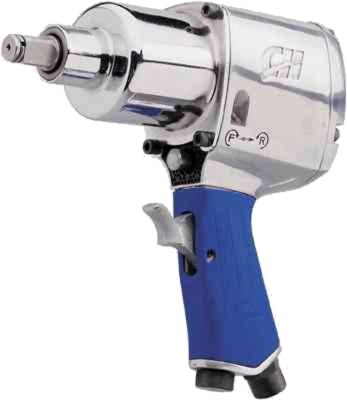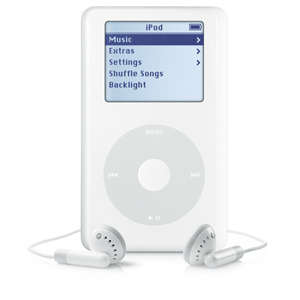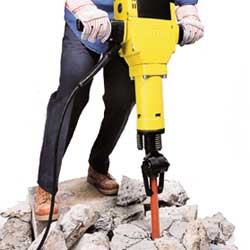Unit 3a - Hearing Conservation

This quiz covers essential aspects of hearing conservation in the workplace, focusing on correct earplug use, exposure limits, and the permanence of noise-induced hearing loss.
- 1.
Which of the following earplugs are being worn correctly?A. B. C.
- A.
A
- B.
B
- C.
C
- D.
All are correct
Correct Answer
C. CExplanation
Photo C demonstrates the correct way to wear your ear plugs. Not having the ear plug inserted correctly will decrease its Noise Reduction Rating and ability to protect your hearing.Rate this question:
-
- 2.
You have been using an impact wrench for 6 straight hours with no hearing protection. The impact wrench creates a noise level of 108dB. Have you been overexposed?
- A.
Yes
- B.
No
Correct Answer
A. YesExplanation
Yes, you have been overexposed to noise. A noise level of 108dB is considered extremely high, and prolonged exposure to such noise can cause permanent hearing damage. The fact that you have been using the impact wrench for 6 straight hours without any hearing protection increases the risk of overexposure. It is important to always wear appropriate hearing protection in loud environments to prevent long-term damage to your hearing.Rate this question:
-
- 3.
You are working in a noise level of 92dB, but ARE wearing ear plugs with a Noise Reduction Rating (NRR) of 23dB. Can you work for 8 hours in this environment?
- A.
Yes
- B.
No
Correct Answer
A. YesExplanation
Yes, you can work for 8 hours in this environment. The noise level is 92dB, but you are wearing ear plugs with a Noise Reduction Rating (NRR) of 23dB. The NRR indicates the amount of noise that the ear plugs can block out. By wearing the ear plugs, the effective noise level that reaches your ears is reduced by 23dB. Therefore, the actual noise level you are exposed to is 69dB (92dB - 23dB). This level is within the acceptable range for prolonged exposure, so you can work for 8 hours without any adverse effects.Rate this question:
-
- 4.
Noise Induced Hearing Loss (NIHL) can be permanent.
- A.
TRUE
- B.
FALSE
Correct Answer
A. TRUEExplanation
NIHL can be permanent depending on many factors, such as length of time exposed to the noise, intensity of the noise, and personal factors.Rate this question:
-
- 5.
With no hearing protection, how many consecutive hours can you work in a noise level of 90dB?
- A.
8
- B.
6
- C.
4
- D.
3
Correct Answer
A. 8Explanation
Without hearing protection, it is safe to work in a noise level of 90dB for a maximum of 8 consecutive hours. This is because prolonged exposure to high noise levels can cause damage to the ears and lead to hearing loss. Therefore, it is important to limit exposure to loud noises and use hearing protection when necessary.Rate this question:
-
- 6.
How can you tell if a noise level is too great?
- A.
The noise hurts your ears
- B.
You must shout over a short distance to be heard
- C.
You have difficulting hearing a few hours after exposure to the noise
- D.
All of the above
Correct Answer
D. All of the aboveExplanation
All of the above options indicate that the noise level is too great. If the noise hurts your ears, it suggests that the noise is too loud and can potentially cause damage to your hearing. Similarly, if you have to shout over a short distance to be heard, it indicates that the noise level is too high for normal conversation. Additionally, if you experience difficulty in hearing for a few hours after being exposed to the noise, it implies that the noise level was excessive and affected your hearing temporarily. Therefore, all of these signs collectively suggest that the noise level is too great.Rate this question:
-
- 7.
The intesity of noise is measured in:
- A.
Amplitude
- B.
Frequency
- C.
Decibels
- D.
Wavelength
Correct Answer
C. DecibelsExplanation
The intensity of noise is measured in decibels. Decibels is a unit used to quantify the level of sound or noise. It is a logarithmic scale that measures the ratio of the sound pressure level to a reference level. This scale allows for the measurement of a wide range of sound intensities, from the faintest sounds to extremely loud ones. The higher the decibel level, the louder the noise. Therefore, decibels are the appropriate unit of measurement for noise intensity.Rate this question:
-
- 8.
The Threshold (or Upper Limit) for what is considered a hazardous noise level is:
- A.
80dB
- B.
85dB
- C.
90dB
- D.
95dB
Correct Answer
B. 85dBExplanation
The correct answer is 85dB. This is the threshold for what is considered a hazardous noise level. Noise levels above 85dB can cause damage to the hearing if exposed to for long periods of time. It is important to take measures to protect oneself from excessive noise exposure in order to prevent hearing loss.Rate this question:
-
- 9.
You are mowing your yard and use your IPod/headphones to drown out the noise. You have ______ your risk of Noise Induced Hearing Loss (NIHL).
- A.
Increased
- B.
Decreased
- C.
Had no effect
- D.
Cancelled out
Correct Answer
A. IncreasedExplanation
By playing your music loud enough to drown out the noise of the lawn mower, you have increased your risk of NIHL by adding to the sound of the mower.
Music Headphones are never effective as hearing protection.Rate this question:
-
- 10.
WITHOUT hearing protection, how long can a concrete chipping operation rated at 97 decibels continue before you are overexposed?
- A.
2 hours
- B.
3 hours
- C.
4 hours
- D.
5 hours
Correct Answer
B. 3 hoursExplanation
The correct answer is 3 hours because the question asks about the duration of a concrete chipping operation rated at 97 decibels before overexposure occurs. Without hearing protection, prolonged exposure to high decibel levels can lead to hearing damage. The duration of 3 hours indicates that after this time, the individual would be at risk of overexposure and potential hearing damage.Rate this question:
-
Quiz Review Timeline +
Our quizzes are rigorously reviewed, monitored and continuously updated by our expert board to maintain accuracy, relevance, and timeliness.
-
Current Version
-
Mar 21, 2023Quiz Edited by
ProProfs Editorial Team -
Oct 03, 2008Quiz Created by
Kiewit
 Back to top
Back to top






